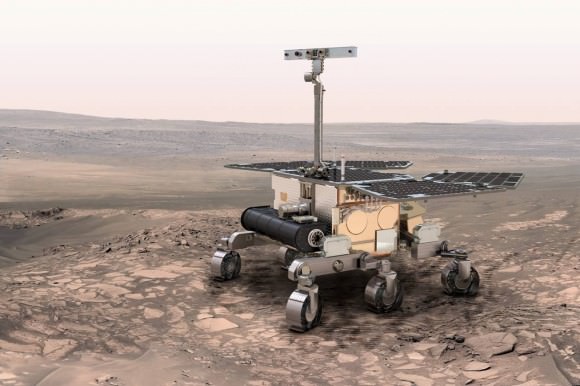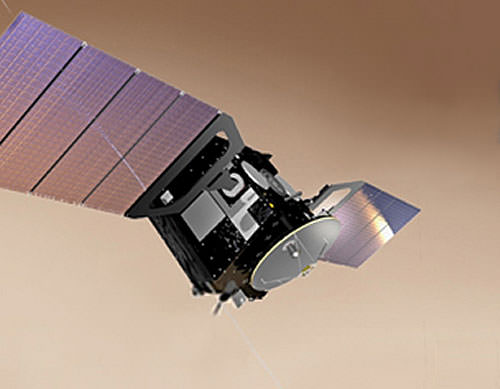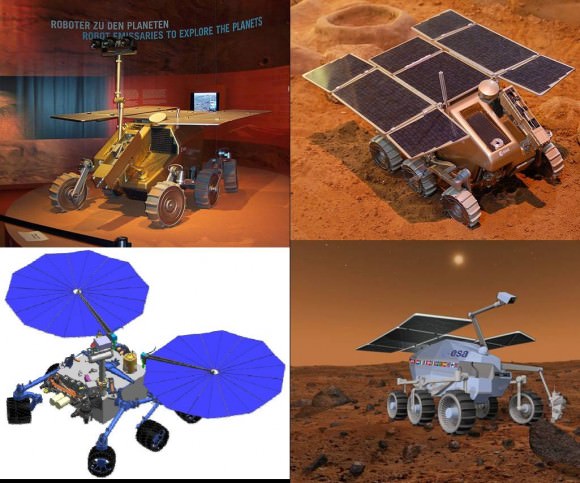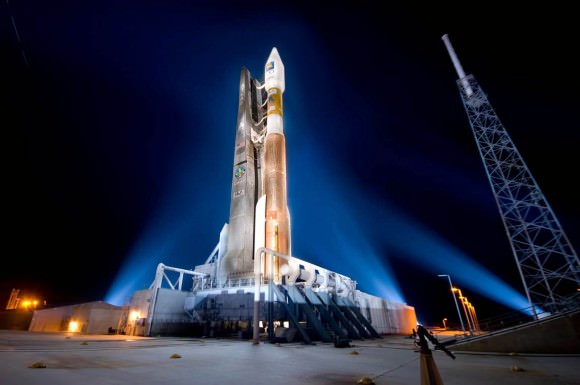
NASA has stated that it cannot provide one of the Atlas rockets required to launch the ExoMars mission that it has partnered with ESA on. Image Credit: ESA
The European Space Agency’s “ExoMars” mission is under threat of cancellation. NASA and ESA heads will meet on Monday, Oct. 3 to decide how much more can be cut from the rapidly slimming mission. This meeting comes on the heels of NASA’s latest round of cuts – which means that the U.S. space agency cannot provide ESA with the Atlas V rocket that was slated to launch part of the mission.
ESA still might be able to keep ExoMars going if it can acquire a Proton rocket under the trade system that the agency is working to negotiate with Russia. Barring that? ExoMars will more-than-likely be cancelled. ESA had been hoping to send a diverse science package to the red planet. ExoMars is currently comprised of a communications relay system, descent and landing modules and a rover that is similar in design to the Mars Exploration Rovers Spirit and Opportunity which have been operating on Mars for the past seven years.

The ExoMars Trace Gas Orbiter was originally set to launch in 2016, now its future is uncertain. Image Credit: ESA
NASA Administrator Charles Bolden and ESA Director-General Jean-Jacques Dordain are scheduled to meet in Cape Town, South Africa, during the International Astronautical Congress. During this meeting they are set to discuss one of two options that are left for their joint Mars expedition. The first is a single 2018 launch that will include a NASA-ESA rover and communications package. The second will be to try and maintain, despite the issues with the launch vehicle, the planned 2016 launch.
If a rocket can somehow be procured and the current schedule maintained, ExoMars would be a two launch affair with the Atlas V launching one of the mission’s components and another launch vehicle transporting the remainder. If the mission is saved, but scaled back further, only a single launch would take place in 2018. The Proton rocket scenario appears to be a last-ditch effort to salvage the program at this time. The final deciding factor as to whether-or-not ESA can save the program, to some degree, in its current configuration – depends on ESA obtaining a rocket to replace the Atlas V which NASA says it can no longer provide.
ESA has estimated that either way, the mission will cost them the same 850 million euros ($1.36 billion) that it has already garnered from the nations that comprise the European Union. This is largely due to the fact that ESA has already spent the money to procure the materials and services needed for the orbiter component of the mission.
The primary issue that has continued to threaten mission is the poor state of the economy – both in the U.S. and Europe.
ExoMars started out as a rover and a separate ground station, and was originally set to launch in 2011 on a Soyuz Fregat rocket. In 2009 ESA signed into the Mars Joint Exploration Initiative with NASA. This agreement with NASA both pushed back the launch of the mission considerably and started ExoMars down the path to where it currently finds itself.

ExoMars has been changed repeatedly since its inception and now it is facing possible cancellation. Image Credits: ESA
Source: Universe Today

No hay comentarios:
Publicar un comentario